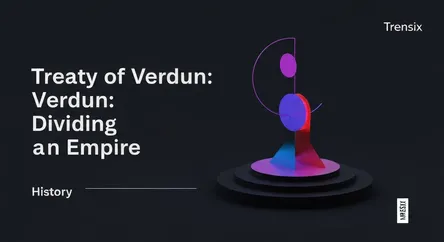History
Treaty of Verdun: Dividing an Empire

Discover the Treaty of Verdun (843), the pact that ended a civil war by dividing Charlemagne's empire and laying the groundwork for modern France and Germany.
What is it?
The Treaty of Verdun was a significant agreement signed in August 843 that concluded a three-year civil war between the grandsons of Charlemagne. It partitioned the vast Carolingian Empire among the three surviving sons of Emperor Louis the Pious: Lothair I, Louis the German, and Charles the Bald. The treaty divided the territory into three kingdoms: West Francia (which became the basis for France) for Charles, East Francia (the precursor to Germany) for Louis, and a central strip called Middle Francia for Lothair, who also retained the imperial title.
Why is it trending?
The Treaty of Verdun is a pivotal event in European history because it marked the first stage in the dissolution of Charlemagne's unified empire. It is seen as the geopolitical birth of France and Germany, establishing the foundational borders that would define Western Europe for centuries. The inherently unstable and elongated territory of Middle Francia became a source of contention between its more powerful neighbors. This led to centuries of conflict, with regions like Alsace-Lorraine being fought over by France and Germany as recently as the 20th century.
How does it affect people?
The treaty's long-term effect was the fragmentation of Europe's political landscape. It accelerated the development of distinct cultural and linguistic identities, as the Latin-based Romance languages evolved in West Francia while Germanic languages dominated the East. The breakdown of centralized imperial authority also contributed to the rise of feudalism, empowering local lords and shaping the social and political structure of the Middle Ages. Ultimately, the divisions established at Verdun created enduring rivalries and territorial disputes that fueled European conflicts for over a thousand years.